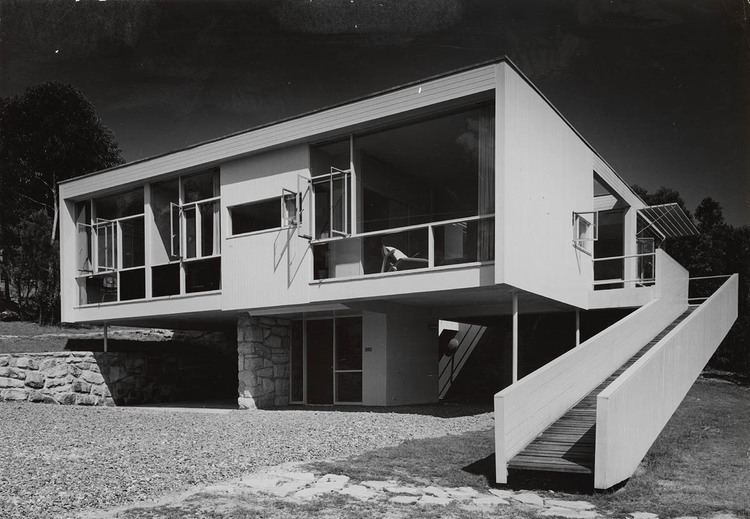Type House Main contractor Harry Seidler Phone +61 2 9989 8020 Construction started 1949 | Completed 1950 Opened 1950 Owner Sydney Living Museums Architect Harry Seidler | |
 | ||
Location 71 Clissold Road, Wahroonga Address 71 Clissold Rd, Wahroonga NSW 2076, Australia Hours Closed today ThursdayClosedFridayClosedSaturdayClosedSunday10AM–4PMMondayClosedTuesdayClosedWednesdayClosedSuggest an edit Similar Harry and Penelope Seidler H, Elizabeth Bay House, Vaucluse House, Australia Square, Sydney Mint | ||
the rose seidler house my interview with harry seidler
Rose Seidler House is a Bauhaus-styled home designed by Harry Seidler located in a remote bushland site at 71 Clissold Road, Wahroonga, an upper north-shore suburb of Sydney, New South Wales, Australia.
Contents
- the rose seidler house my interview with harry seidler
- The sims 3 house building rose seidler house 1950 s modernist home speed build
- References
The house was designed for both of Seidler's parents–Rose and Max Seidler - but since Rose Seidler was the person who initiated and drove the commission, making all the main client decisions - the house is named after only her.
It is managed by the Historic Houses Trust of New South Wales (now called Sydney Living Museums) as a museum that has been open to the public each Sunday since 1991. Built in 1949-1950, it was futuristic and modern for Australia at that time, and is an outstanding example of mid-century-modern domestic architecture.
In 1991, Harry Seidler described the house's spatial design which was characteristic of his approach in the rest of his life's work:
this house explodes the surfaces that enclose a normal house or space, and turns it into a continuum of free standing planes, through which the eye can never see an end, you are always intrigued what’s beyond, you can always see something floating into the distance, there is never an obstruction to your vision, it is a continuum (of space), that I believe 20th century man’s eye and senses responds positively to.
Following the example of the houses he had worked on in Breuer's office in 1946-48 which were located on compounds next to a public nature reserve in North-East USA, Seidler picked the site for the house because it was next to Ku-Ring-Gai Chase reserve. In 1948, the site had been used to mine pottery clay, and was considered very remote - being at the end of a dirt road through market gardens. It was long after the house was finished that the surrounding streets were paved and developed as a residential suburb.
There is a documentary "Frozen Music: Rose Seidler House and the Work of Harry Seidler" (2004) (22 minutes) - which screens on loop at Rose Seidler House during opening hours.
